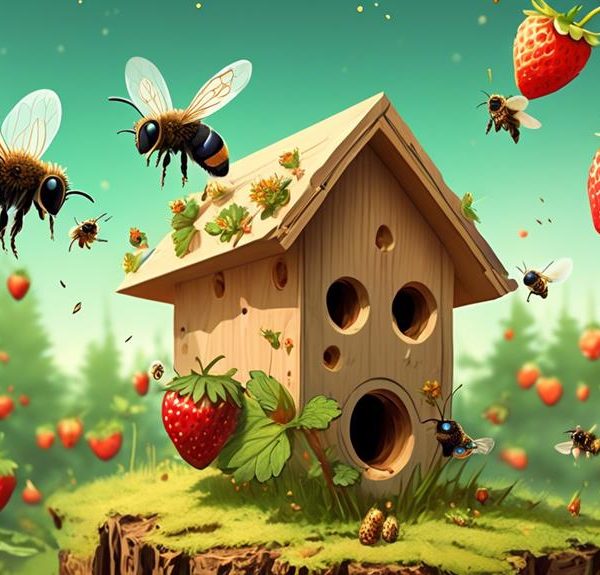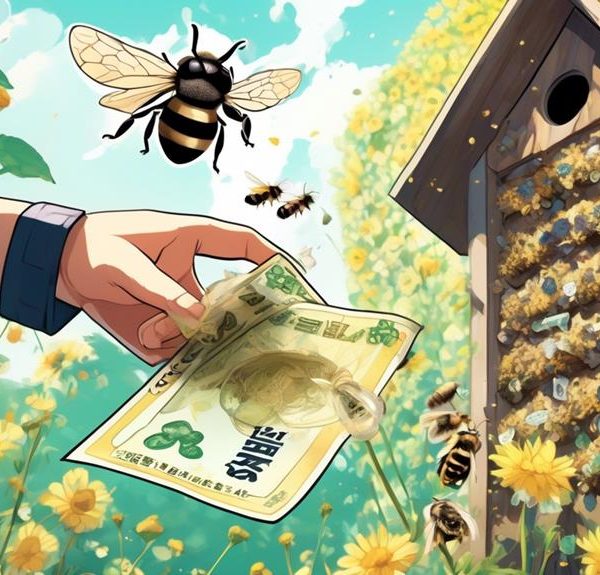Yearning to know if box elder trees pose a threat to the industrious mason bees? Dive into our in-depth exploration to uncover the truth.
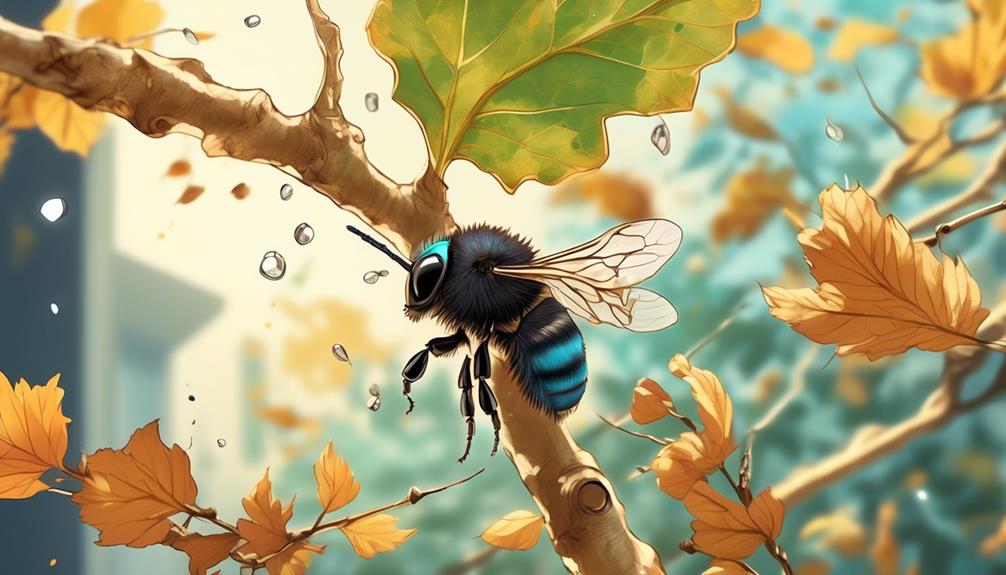
Can Box Elders Hurt Mason Bees?
Bumbling bees buzz busily beneath the boughs of box elder trees, but could there be a hidden hazard lurking for our hardworking mason bees?
You've probably pondered this question while observing these industrious insects darting back and forth. Mason bees are known for their unrivaled role in pollination, but their interactions with box elders aren't as well understood.
We'll take a closer look at the potential threats, if any, these trees pose to mason bees. It's a journey that promises to be both enlightening and intriguing, offering insights into a world we often overlook.
So, are you ready to embark on this exploration?
Key Takeaways
- Box Elder Bugs can pose a threat to Mason Bee nesting sites.
- Box Elders and Mason Bees have a symbiotic relationship, with the bees pollinating the trees and the trees providing suitable habitat and food sources for the bees.
- Box Elders can potentially introduce diseases and parasites that can harm Mason Bees.
- Protecting Mason Bees from Box Elders involves limiting the number of Box Elder trees near their nests, using non-toxic bug-repellent sprays, regularly inspecting nests for signs of Box Elder Bugs, and avoiding the use of pesticides that harm Mason Bees.
Understanding Box Elder Trees
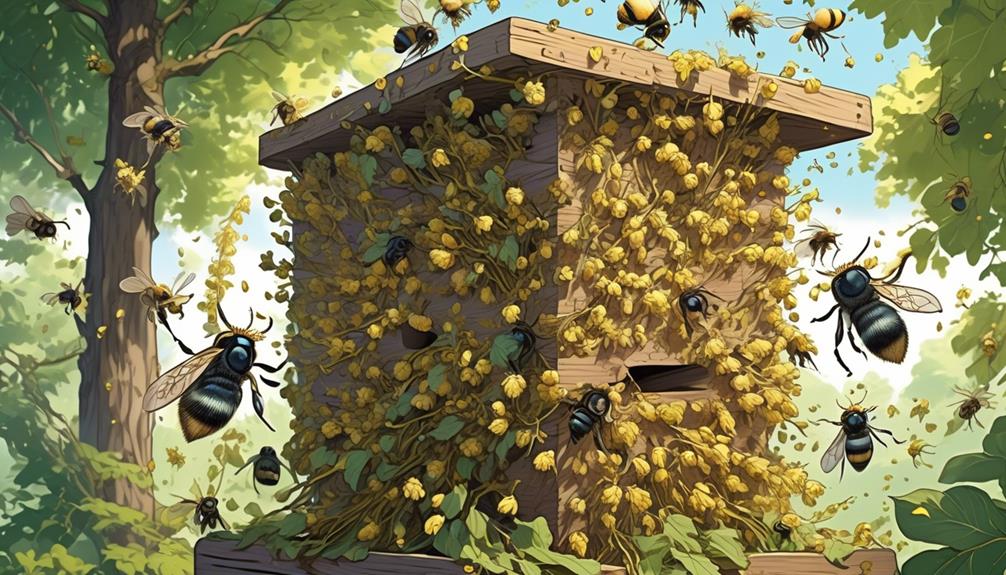
To fully comprehend the relationship between Box Elders and Mason Bees, you first need to understand the unique characteristics and ecosystem of Box Elder trees. Native to North America, Box Elder trees are part of the Maple family. They're deciduous, meaning they lose their leaves annually, and have a lifespan of about 30 to 60 years.
Box Elders thrive in diverse environments, ranging from riverbanks to urban areas. They're hardy trees, resilient to variations in temperature, soil composition, and moisture levels. They're identifiable by their compound leaves, which consist of three to seven leaflets, and by the distinctive, winged seeds they produce.
Now, you're probably wondering, 'What's this got to do with Mason Bees?' Well, the Box Elder's ecosystem plays a significant role in the lives of these bees. The tree's flowers provide an essential source of pollen and nectar for Mason Bees during the spring. Additionally, the tree's bark and hollow branches make a perfect nesting site for them.
Understanding the Box Elder's ecology, you can better appreciate its role in sustaining the Mason Bee population. It's not just a tree; it's a critical component of a broader, interconnected ecosystem.
The Life Cycle of Mason Bees
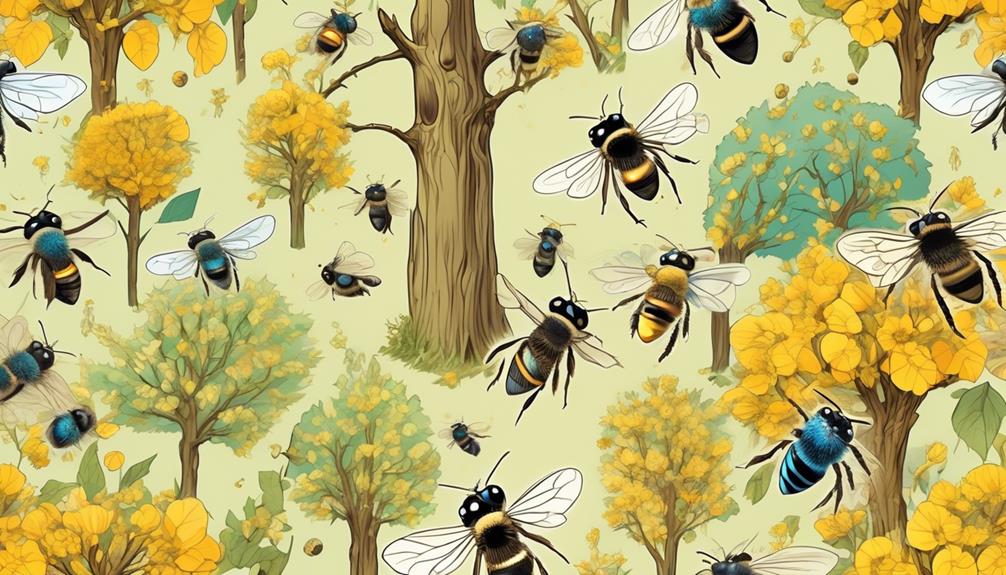
Delving into the life cycle of Mason Bees, you'll find a fascinating story of survival and adaptation that's intricately tied to the Box Elder's ecosystem. It starts in spring, when adult females emerge from their winter slumber to mate. After mating, the female seeks out hollow stems or pre-existing holes in wood, where she'll lay her eggs.
She'll deposit a single egg, followed by a deposit of pollen and nectar, forming a provision mass to nourish the developing larva. This process is repeated until the tunnel is filled, usually with 5-10 cells. The female then seals the entrance, leaving her offspring in a secure, food-filled environment.
After about a week, the egg hatches into a larva, which feeds on the provision mass until it's gone. Then, it spins a cocoon and pupates, transforming into an adult bee. The adult stays in the cocoon over winter, emerging the following spring to repeat the cycle.
Understanding this life cycle is vital, as it's influenced by environmental factors such as the availability of suitable nesting sites and food sources, both of which are provided by Box Elder trees. So, your understanding of Mason Bees isn't complete without considering their relationship with Box Elders.
Box Elders: Potential Threats to Bees
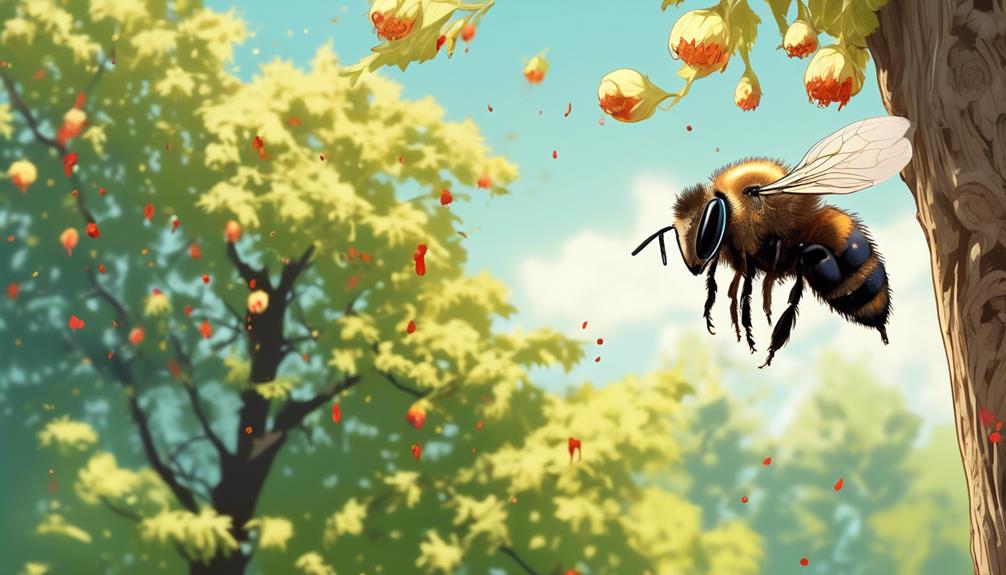
While Box Elders provide essential nesting sites and food sources for Mason Bees, they could also pose potential threats that might significantly impact the bees' survival and reproduction.
You may wonder, 'How can a tree be a threat?' Well, it's not the tree itself but the pests it can harbor. Box Elders are known to attract certain pests, like the Box Elder Bug, which can disrupt the delicate ecosystem of Mason Bees. These bugs can invade nesting sites, compete for food sources, and introduce diseases that can be detrimental to the bees.
Moreover, changes in the Box Elder's environment could also pose a threat. For instance, the application of pesticides on or around Box Elders can inadvertently harm the Mason Bees. These substances can contaminate the pollen and nectar the bees collect, leading to a decline in their population.
Lastly, consider the impact of climate change. As temperature and weather patterns shift, the blooming period of Box Elders might change. This can result in a mismatch between the bees' activity and the availability of their food source, which could further threaten their survival.
Mason Bees and Box Elder Interactions
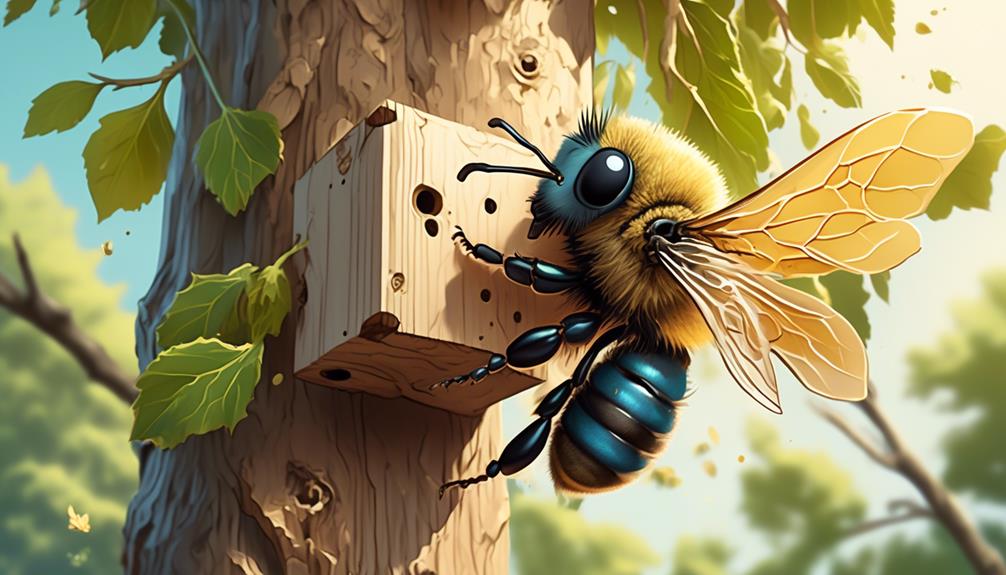
Often, you'll find Mason bees actively interacting with Box Elders, a relationship that significantly influences their life cycle and survival. This interaction is a complex ecological dance, with both species influencing the other in meaningful ways.
Consider the following table for a detailed comparison:
Mason Bees and Box Elders | Effects |
|---|---|
Pollination | Mason bees, as part of their foraging behavior, pollinate Box Elders, aiding in their sexual reproduction. |
Habitat | Box Elders provide a suitable habitat for Mason bees, offering hollows for nest building. |
Food Source | Box Elders are a significant source of pollen and nectar for Mason bees, contributing to their diet. |
Threats | Box Elders can also host parasites that may pose threats to Mason bees. |
You'll notice that while there are benefits to this relationship, it's not without its drawbacks. The presence of parasites in Box Elders can lead to increased disease susceptibility and mortality in Mason bees. Despite these potential threats, it's clear that the relationship between Mason bees and Box Elders is a crucial aspect of their mutual survival and propagation.
Protecting Mason Bees From Box Elders
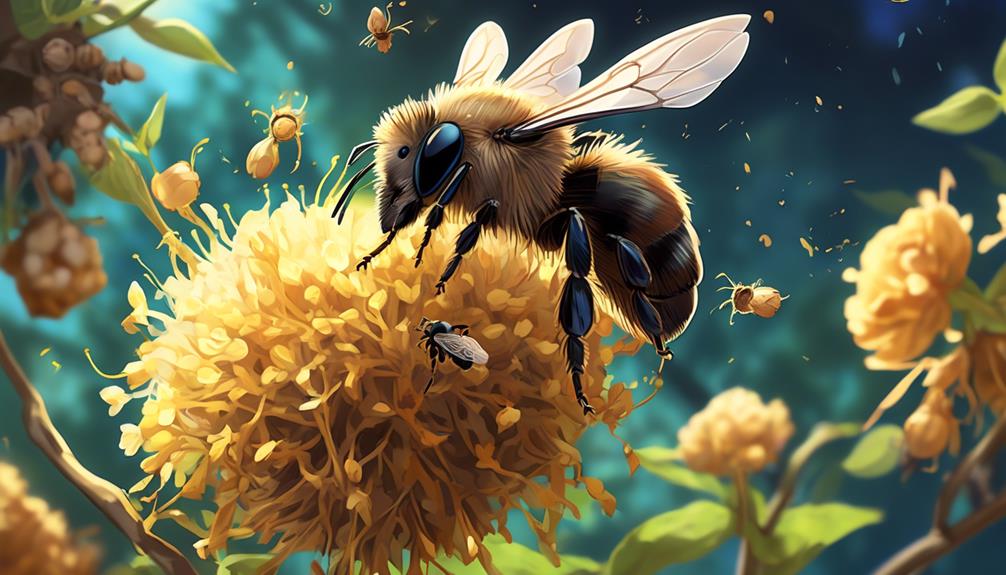
To protect Mason bees from potential threats associated with Box Elders, it's crucial to understand the nature of these threats and develop targeted mitigation strategies. Box Elders, commonly known as Box Elder Bugs, can create an inhospitable environment for Mason Bees. These insects are known to invade and damage homes, which includes the habitats of Mason Bees.
First, ensure that you limit the number of Box Elder trees in the vicinity of your Mason Bee nests. Box Elders are the main food source for Box Elder Bugs, and fewer trees would mean fewer bugs.
Further, consider using non-toxic, bug-repellent sprays on the nesting sites of your bees. These sprays deter Box Elder Bugs without harming the bees themselves.
Regularly inspect your Mason Bee nests for signs of Box Elder Bugs. If you notice an infestation, remove the bugs manually or consider professional pest control services. It's important not to use pesticides, as they can harm Mason Bees.
Conclusion
In conclusion, Box Elders can pose a threat to Mason Bees. Their sap, while not directly harmful, can attract pests that are detrimental to bees. Moreover, the interaction between Mason Bees and Box Elders isn't well-studied, making it crucial to monitor closely.
Protecting these bees from potential threats is essential for maintaining their populations and the crucial role they play in our ecosystems.

